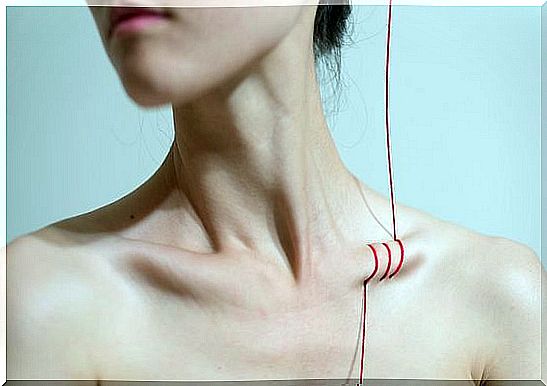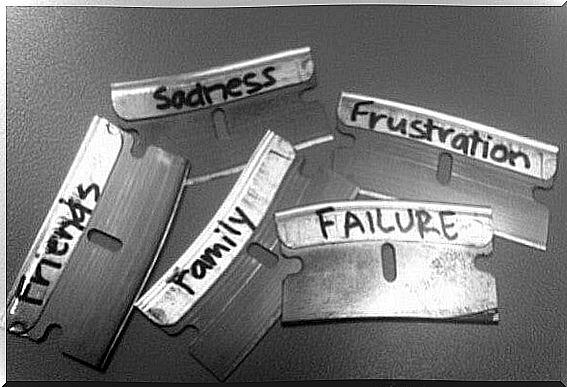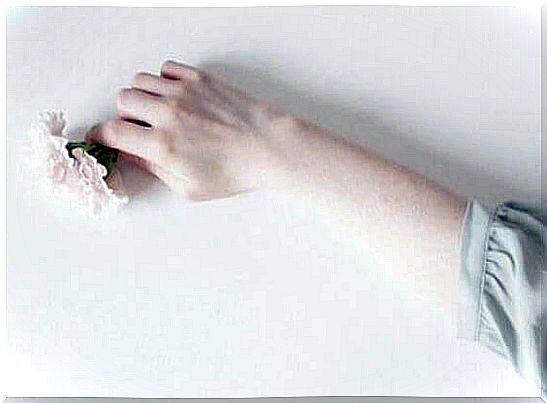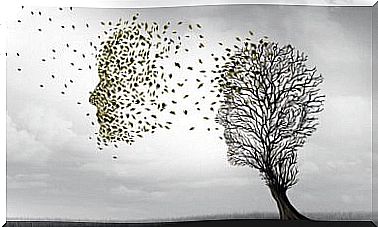Self-Mutilation: What’s Behind This Conduct?

The steel blade of a sharpener or a razor, scissors or even the nails themselves serve to draw a horizontal line on the forearm, abdomen or thighs. Self-mutilation is, for many people, the outlet for emotional pain, a way to fill the void, but above all, it is also the translation of a poorly managed psychic discomfort.
The first question that comes to mind when we see these marks, some recent but others witnessing a chronic practice of terrible self-harm, is “Why?” Why would anyone want to intentionally get hurt? Sometimes it’s cuts, sometimes it’s burns, and sometimes it’s the result of constant and insistent scratching in order to inflict a wound.
The answer to this question is complex, in the first place because although a large part of the population affected by this disorder is made up of young patients, adults also suffer from it much more than we thought at first. In turn, we cannot leave aside a growing and alarming phenomenon: the impact that self-harms have on social networks and the great contagion power they have on teenagers.
It should also be said that although in the fourth version of the “Diagnostic and Statistical Manual of Mental Disorders” (DSM) self-mutilation behaviors are seen as a symptom and not a disorder, in its fifth edition it became an independent condition. with its own symptomatology. It can also be comorbid with other disorders, such as mood, anxiety, eating, etc.
In turn, the American Psychiatric Association speaks of “suicidal disorder by self-injury”, and defines it as a strategy where pain serves as a way to release, to alleviate negative emotions, the feeling of loneliness, emptiness, isolation, to to distract attention from other issues, to lessen feelings of anger, release tension, or control fast-paced thinking.

Self-Mutilation: The Wrong Way to Escape Emotional Pain
One thing that many experts question, given the clinical definition that this disorder has received, is whether we are really facing suicidal behavior. It is known, for example, that between 50 and 70% of people who harm themselves have tried or will try to commit suicide at some point in their life cycle. It is possible that the end in itself of these cuts, burns or lacerations is not one of taking one’s own life, of course, but behind this conduct there is a thought and a psychological discomfort that, at some point, may have a bad result.
Despite this, we know that each case is unique, that each person has unique and exceptional characteristics, but above all we sense that self-mutilations are the tip of an iceberg, are just the roof of a social phenomenon buried and increasingly intense in the face of which we should all be more sensitive to. Authorities and social organizations, in turn, should also be more attentive and more interested in investigating what is behind all this.

“When I cut myself, the anxiety and drama are gone, so I relax.” This phrase is the most repeated by teenagers between 12 and 18 years old who practice cutting , or self-mutilations. This form of self-destruction is a poor adaptation to stress or life challenges, and is almost the same behavior as an addict who seeks to consume to “forget”.
While it is true that such wounds are just epidermal cuts and that these young people, for the most part, do not have any borderline personality disorder, many of them have emotional, relationship, academic problems, low self-esteem and a clear rejection of their physical image.
On the other hand, although there are professionals who opine that it is often a matter of “drawing attention” or showing the internal discomfort in front of others, it should be said that we are facing a much deeper problem and that, as we have pointed out, it also affects the adult population.
How to approach self-mutilation behaviors?
Marcos is 56 years old. He is a person with a very stressful professional life and draws attention to something very special: in the summer he always wears long sleeves, he takes great care so that his cuff links are never unbuttoned. If he rolled up his shirt sleeves at any point, a whole map of horizontal wounds, old marks and a few new ones would be in evidence.
Marcos is any example of a good part of the adult population. In fact, according to the universities of Oxford, Manchester and Leeds, for every 100,000 inhabitants, 65 adults are self-injured (it is also necessary to make special mention of the elderly). This data is of great relevance, as it has also been proven that the risk of suicide in these cases is very high. If we ask ourselves now what is behind these behaviors, the answer is simple: intense and persistent negative emotions, high self-criticism and great difficulty in expressing and managing one’s emotions.

The approach to self-mutilation disorder implies knowing, in the first place, what is behind this behavior. There may be covert disorders (eating disorders, depression, obsessive-compulsive disorder, anxiety disorder…). These are realities that only professionals can determine.
Even so, despite the fact that hospitalization is often recommended, this option should undoubtedly be the last option, especially when suicidal behavior or thoughts already appear. Cognitive-behavioral therapy, for example, is highly effective in these cases, reducing both self-harm and suicidal cognitions and symptoms of depression and anxiety.
On the other hand, family therapies, group dynamics, mindfulness-based therapies or even dialectical behavior therapy to learn to tolerate anxiety, frustration, control emotions and improve relationships with others, be very positive approaches when dealing with the issue of self-injury.
Therefore, it is better to look for more useful, sensitive and reasonable outlets for the pain of life.









